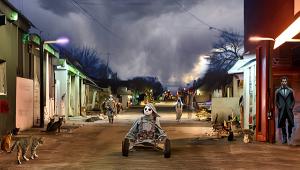Test Your Image Stabilization System

Whether your image stabilization system is built into your camera or built into your lens, you will derive greater benefit if you understand exactly how well it performs under different circumstances and understand its limitations. One quick and easy way to test a compact digital camera (or DSLR) is to use progressively longer shutter speeds to capture a scene that contains both stationary and moving objects.
Some examples of scenes that contain both stationary and moving objects include a flowing river, a waterfall and any busy street where people and/or cars are passing by while the buildings and streetlights hold their ground. (If the buildings begin to move, stop shooting immediately and proceed home at once.)
Leave your tripod at home (this is the only time you’ll hear me suggest that). Depending on how dark it is, begin shooting at 1/30 or 1/25 of a second. Then try 1/15, 1/10, etc. until you begin the get the shakes. When you reach the combination that yields sharp stationary objects and wildly blurred moving objects, you’ve reached the maximum you can expect from your camera. Make note of the shutter speed and be confident that you can shoot handheld at that speed under most conditions.
The image above was shot with a Canon PowerShot S90 at f3.5 for 1/13 of a second. Although it’s harder to see in this greatly reduced image, the rocks are razor sharp while the millstream is a total smear.

















































